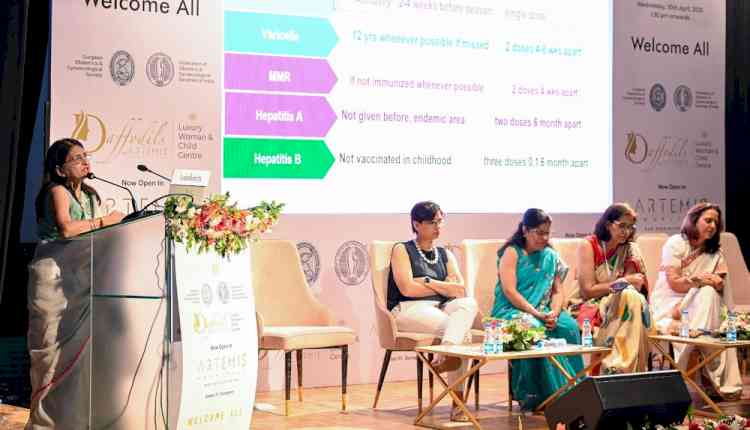Navigating the Silent Threat: CerviCervical Cancer, Young Womencal Cancer in Young Women - Risks, Challenges, and Prevention
For millions of women worldwide, the word "cervical cancer" carries a weight that transcends medical terminology. It's a diagnosis that disrupts lives, a shadow that hangs over families. Yet, within this darkness, there flickers a spark of hope. Early detection, proactive measures, and a growing understanding of risk factors are rewriting the narrative. This article is a testament to that fight, a battle cry against a preventable disease.

by Dr. Subrata Debnath, Gynecological oncologist and Robotic Surgeon, HCG EKO Cancer Centre, kolkata
For millions of women worldwide, the word "cervical cancer" carries a weight that transcends medical terminology. It's a diagnosis that disrupts lives, a shadow that hangs over families. Yet, within this darkness, there flickers a spark of hope. Early detection, proactive measures, and a growing understanding of risk factors are rewriting the narrative. This article is a testament to that fight, a battle cry against a preventable disease.
Cervical cancer is a type of cancer that occurs in the cells of the cervix, which is the lower part of the uterus that connects to the vagina. This form of cancer is mostly caused by persistent infections with high-risk types of human papillomavirus (HPV), a sexually transmitted infection. While cervical cancer is largely preventable and treatable if detected early, it remains a significant global health concern, particularly affecting women in their 30s and 40s. This article aims to highlight the risk factors involved along with the challenges faced to overcome them and strategies for preventing the disease from advancing.
Risk Factors
HPV Infection: Persistent infection with high-risk HPV is the leading cause of cervical cancer. HPV is a common sexually transmitted infection, and certain types of the virus can lead to changes in cervical cells that may eventually become cancerous.
Early Sexual Activity: Women who become sexually active at an early age are at a higher risk of exposure to HPV. Early initiation of sexual activity may increase the chances of contracting the virus before the immune system has a chance to mount a robust defense.
Multiple Sexual Partners: Having multiple sexual partners, or having a partner with multiple sexual contacts, increases the risk of HPV transmission.
Weakened Immune System: Conditions or medications that suppress the immune system can reduce the body's ability to fight off HPV infections, increasing the risk of cervical cancer.
Challenges
Lack of Awareness: Limited awareness about the risks of cervical cancer, the importance of regular screenings, and the availability of preventive measures such as HPV vaccination contribute to delayed diagnosis and treatment.
Socio-economic Factors: Disparities in healthcare access and socio-economic factors can result in unequal access to preventive measures and early detection, impacting the outcomes for women in different demographic groups.
Stigma: The stigma associated with discussions about sexual health, including HPV and cervical cancer, can hinder open communication and discourage women from seeking appropriate care and information.
Prevention and Screening
HPV Vaccination: Vaccination against HPV is a crucial preventive measure. The HPV vaccine is typically administered in early adolescence to protect against the most common cancer-causing types of the virus.
Regular Screenings: Pap smears and HPV tests are essential for early detection. Pap smears involve the examination of cervical cells for abnormalities, while HPV tests check for the presence of the virus. Early detection allows for timely intervention and treatment.
Safe Sexual Practices: Practicing safe sex, using condoms consistently and correctly, and limiting the number of sexual partners can reduce the risk of HPV transmission.
Health Education: Promoting awareness about cervical cancer, its risk factors, and preventive measures is crucial. Education campaigns aimed at both healthcare providers and the public help increase knowledge and encourage proactive health behaviors.
Cervical cancer, with its well-established risk factors and preventive measures, underscores the importance of a comprehensive approach involving vaccination, regular screenings, and education to reduce its global impact on women's health. Routine healthcare check-ups, open communication about sexual health, and the implementation of preventive strategies are vital components of the fight against cervical cancer.


 City Air News
City Air News 







